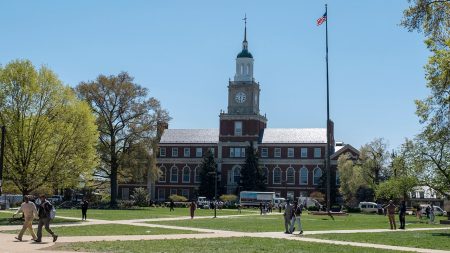Jamaica’s Rooftop Solar Revolution: How Island Communities Are Gaining Energy Independence
Solar Power Emerges as Resilience Strategy in Caribbean Nation
In the lush neighborhoods of Kingston, Jamaica, a quiet revolution is taking place on rooftops across the island. Solar panels, once a rarity in this Caribbean nation, are now becoming a common sight as Jamaicans increasingly turn to renewable energy solutions. This shift isn’t merely about environmental consciousness or reducing electricity bills—though those are certainly factors. In a region frequently battered by hurricanes and power outages, solar technology is proving to be a critical component of resilience and community support.
When Hurricane Elsa sideswiped Jamaica last year, much of the island plunged into darkness. Power lines toppled, and Jamaica Public Service Company (JPS), the nation’s primary electricity provider, scrambled to restore connections. But in neighborhoods where rooftop solar installations have gained popularity, a different story unfolded. Residents like Marcus Bennett, who invested in a solar system with battery storage two years ago, barely noticed the interruption. “By the time I woke up the morning after the storm, I realized most of Kingston was without power,” Bennett explains from his veranda in the Stony Hill district. “But here, our refrigerator kept running, our phones stayed charged, and we even had neighbors coming by to charge their devices. When you have solar with storage capacity, you’re not just helping yourself—the entire neighborhood benefits.”
Economic Benefits Driving Widespread Adoption
Jamaica’s embrace of solar energy represents a significant shift in a country historically dependent on imported fossil fuels. The economics of this transition are compelling. The island nation has traditionally faced some of the Caribbean’s highest electricity costs, with rates averaging 30 cents per kilowatt-hour—more than double what mainland Americans typically pay. These prohibitive costs have made solar an increasingly attractive option for middle-class Jamaicans, with the investment typically paying for itself within five to seven years. “I was skeptical at first about the upfront costs,” admits Sheila Morris, a small business owner in Montego Bay who installed a 5kW system last year. “But my electricity bill has dropped by nearly 80 percent, and during our frequent power outages, I’m still operational while other shops have to close. The competitive advantage alone made it worthwhile.”
The Jamaican government has recognized this potential and implemented policies to accelerate adoption. The net billing arrangement allows solar users to sell excess power back to the grid, while tax incentives reduce the initial investment burden. These policies have helped create a robust solar industry on the island, with more than two dozen companies now offering installation services. The sector has generated over 1,000 new jobs in recent years, according to the Jamaica Solar Energy Association, creating a virtuous cycle of economic development. As Damian Wilson, an energy policy analyst with the University of the West Indies, explains: “We’re seeing a triple benefit—lower consumer costs, reduced national dependence on imported fuels, and the creation of skilled jobs that can’t be outsourced. This is the kind of sustainable development Jamaica has been seeking for decades.”
Community Resilience Through Decentralized Energy
Perhaps the most profound impact of Jamaica’s solar boom is how it’s reshaping community relationships during crises. Traditional centralized power infrastructure is inherently vulnerable to extreme weather events—a single downed transmission line can affect thousands of customers. Distributed solar systems, however, create islands of energy security that often become community resources. In Portland Parish, an area frequently affected by hurricanes, solar-equipped homes have begun functioning as informal community resilience centers. After Hurricane Matthew brushed the island in 2016, Everton Clarke’s solar-powered home became a temporary charging station and refrigeration point for perishable medications needed by elderly neighbors.
“There’s something powerful about having energy when everyone around you doesn’t,” Clarke reflects. “It changes how you think about your responsibility to your community.” This sentiment is echoed by disaster management professionals, who increasingly view distributed energy resources as critical infrastructure. “We can’t always reach remote communities immediately after a major weather event,” explains Jacqueline Williams, a disaster response coordinator with Jamaica’s Office of Disaster Preparedness and Emergency Management. “Homes with independent power production become de facto emergency response centers in those crucial first 48 hours. We’ve started mapping solar-equipped properties as part of our disaster planning.” This grassroots approach to energy security represents a paradigm shift in how Jamaica approaches resilience—not just through centralized government response, but through networked community resources.
Technological Advancements Fueling Growth
The technological landscape for solar energy has evolved dramatically in Jamaica over the past decade. Early adopters faced significant barriers: expensive equipment, most of which needed to be imported; limited battery storage options; and complicated installation requirements. Today, the ecosystem has matured considerably. Battery costs have fallen by more than 70 percent since 2010, making energy storage increasingly affordable. Meanwhile, improved panel efficiency means systems require less space to generate meaningful power—a critical factor on an island where residential land is at a premium.
Local innovation is also accelerating adoption. Kingston-based company SolarSmart Jamaica has developed specialized mounting systems designed specifically for the corrugated zinc roofs common throughout the island—roofs that previously posed installation challenges. “We’re not just importing solutions designed for American suburban homes,” explains Denise Forrester, SolarSmart’s founder. “We’re creating technologies adapted to Jamaican architecture and weather conditions.” This localization extends to financing as well. Several Jamaican banks now offer specialized solar loan products with terms structured around the projected energy savings. The National Housing Trust has pioneered a program allowing qualified homeowners to include solar installations in their mortgage financing—effectively removing the upfront cost barrier that previously limited adoption to wealthier Jamaicans. “Solar isn’t just for the elite anymore,” says Richard Thompson, a taxi driver who recently installed a system on his modest Spanish Town home. “My system is modest—just enough to run the essentials—but it gives me peace of mind knowing my children can study at night regardless of JPS outages.”
Future Outlook: Challenges and Opportunities
Despite its remarkable progress, Jamaica’s solar transition faces significant challenges. Grid integration remains complicated, with JPS expressing concerns about the stability of a network with high penetrations of variable renewable energy. Regulatory frameworks haven’t fully caught up with technological realities. And while costs have decreased, the initial investment remains beyond reach for many lower-income Jamaicans. However, innovative solutions are emerging to address these barriers. Community solar projects, where multiple households share the benefits of a single installation, are gaining traction in denser urban neighborhoods. Battery technology continues to improve, potentially resolving grid stability concerns. And international climate finance is increasingly available to support renewable energy transitions in vulnerable island nations.
Looking ahead, Jamaica’s energy landscape appears poised for continued transformation. The government has set an ambitious target of 50% renewable energy by 2030—a goal that would have seemed impossible a decade ago but now appears increasingly achievable. “What’s happening in Jamaica represents a potential model for island nations worldwide,” observes Dr. Elizabeth Morgan, an energy transition specialist who has studied renewable adoption across the Caribbean. “When you combine abundant natural resources with supportive policy and genuine community benefits, the transition can happen remarkably quickly.” For residents like Bennett, Morris, and Clarke, the future is already here—a future where energy independence creates not just personal benefits, but stronger, more resilient communities. As Clarke puts it: “After generations of depending on others for our energy, there’s something profoundly empowering about harvesting it from our own rooftops. It changes how you think about what’s possible for Jamaica.” In neighborhoods across this sun-drenched island, that new sense of possibility is spreading as rapidly as the gleaming panels that increasingly define the Jamaican skyline.









